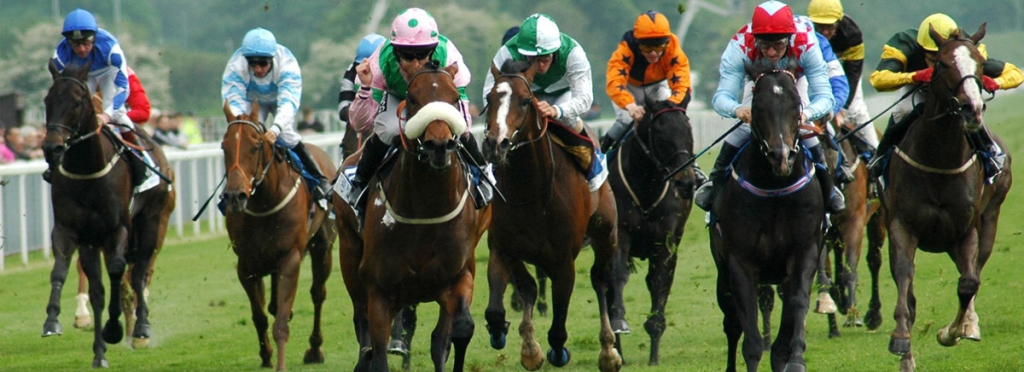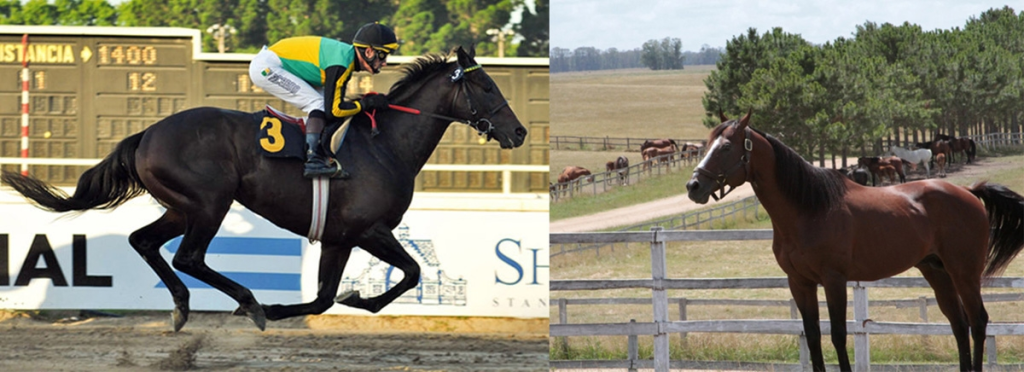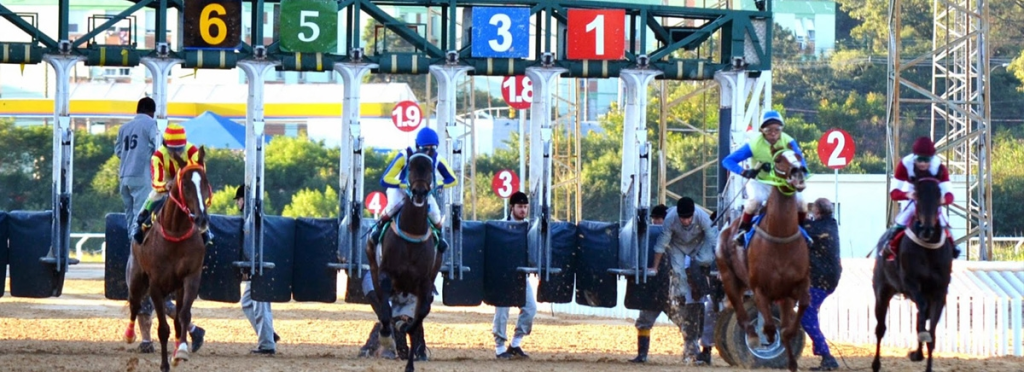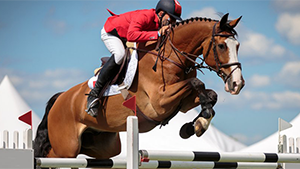
“Turf” originates from the English word “turf,” which named the first horse racing competitions in England. Today it is mostly used colloquially.
Life Planning of Racing Horses:
Horses destined for the turf have their entire lives planned out, even before they are born. Specialized stud farms conduct genetic studies for optimal crossings. After conception, the mare’s pregnancy and the foal’s development are monitored until it reaches the age to be sold at auction or to go to its reserved owner.
Later, the horse is sent to the training stables located at racetracks, where it is schooled, trained, and adapted to the demands of racing. Each horse has its own stall and is under the care of a trainer, who has at their disposal the full infrastructure and staff (farriers, veterinarians, groomers, feed suppliers) to prepare the horse for competition. Finally, it is exercised and ridden by a jockey.
Characteristics:
Thoroughbreds race from the age of two up to, exceptionally, ten years old. They weigh between 380 and 550 kg, and the best runners are neither too large nor too small. They carry 50–60 kg in a race, including jockey and equipment.

When retired from racing, they generally become breeding stock, both males and females.
All horses undergo a full veterinary check and anti-doping tests before participating in races.
Horse Racing in Brazil
Because it is widely practiced and involves betting, horse racing in Brazil is regulated by federal law.
A racing event typically features several races (“páreos”), with intervals between them to allow for betting. It is organized weekly with an official calendar, featuring multiple races where only thoroughbreds compete, at racetracks administered by Jockey Clubs.
Most famous closed-track venues:
- Rio de Janeiro: Jockey Club Brasileiro / Hipódromo da Gávea
- São Paulo: Jockey Club de São Paulo / Hipódromo de Cidade Jardim
- Porto Alegre: Jockey Club do Rio Grande do Sul / Hipódromo do Cristal
- Curitiba: Jockey Club do Paraná / Hipódromo do Tarumã

There are also entities that promote only straight-track races, often using not only thoroughbreds but also Quarter Horses due to their speed. Two such examples are:
- Sorocaba: Jockey Club de Sorocaba
- Carazinho: Jockey Club Carazinhense
Race Rules
Races (“páreos”) are divided into two types:
- Common races: selection by age and number of wins.
- Classic races: the most important contests, called “Grandes Prêmios” (“Grand Prizes”).
Venue / Track:
Races are held at racetracks with multiple dirt or turf courses and pavilions for trade, promotion, and gatherings. Tracks may be closed (with curves and straights) or entirely straight. Closed tracks are generally oval, with a central grass area (“infield”) and distances from 1,500 to 4,000 meters. Special races abroad may include obstacles (not in Brazil). Straight tracks are frequent in rural areas and usually measure 300–500 meters.
Typical distances:
- 1,000 m: sprinters
- 1,600 m (about a mile): milers
- 2,400 m: distance runners
Each racehorse can reach speeds over 60 km/h.
Starting
Because betting stakes can be very high, everything about racing—especially the start—is handled with care. The person in charge of the start is called the “starter,” who activates the mechanism releasing the horses. Horses wait in stalls (“starting gates” or “boxes”), with doors front and back that open simultaneously at the start signal.
Although jockeys usually ride the horses, there are also harness racing forms where horses pull small carts (“sulkies”), though this is uncommon in Brazil. English racetracks run clockwise (“English style”), while Brazil and the U.S. run counter-clockwise (“American style”).

Types of Bets
The popular name for a betting ticket is “pule” or “poule.” The most commonly used bets (there are numerous types of wagers in each race) are:
- Win or “Ponta” (Vencedor): a direct bet on the winning horse.
- Place (“Placê”): a bet that is valid if the selected horse finishes in first or second place.
- Quinella (“Dupla”): the bettor selects two horses; regardless of order, one must finish first and the other second.
- Exacta or Double-Exacta (“Exata” or “Dupla-Exata”): similar to the Quinella, but the bettor must correctly predict the exact order of the two horses finishing first and second.
- Trifecta (“Trifeta”): the bettor predicts the first three finishers in exact order, with the option of making straight bets (one horse for first, one for second, one for third) or multiple combinations (any number of order variations).
- Superfecta (“Quadrifeta”): like the Trifecta, but instead of three horses, four are chosen.
There are also “remates” and “paradas” as forms of betting. The first, widely used in rural areas, consists of auctioning off the right to bet on each competitor, formally or informally. “Paradas” are verbal contracts between two or more people, each choosing one or more competitors, and are generally informal wagers.
Of course, it’s not only bettors who profit from competitions. Separately, there are cash prizes and sometimes trophies for the owners of the winners and top finishers, for the jockeys, and even for the breeders and trainers.
Horse racing is generally an activity practiced by the upper social classes because of the high maintenance costs. However, betting is done by turf enthusiasts of all social classes, since wagers can also be placed in small amounts. In addition to being a sport and entertainment, horse racing generates economic and social activity, which is why it is so important in many countries.


